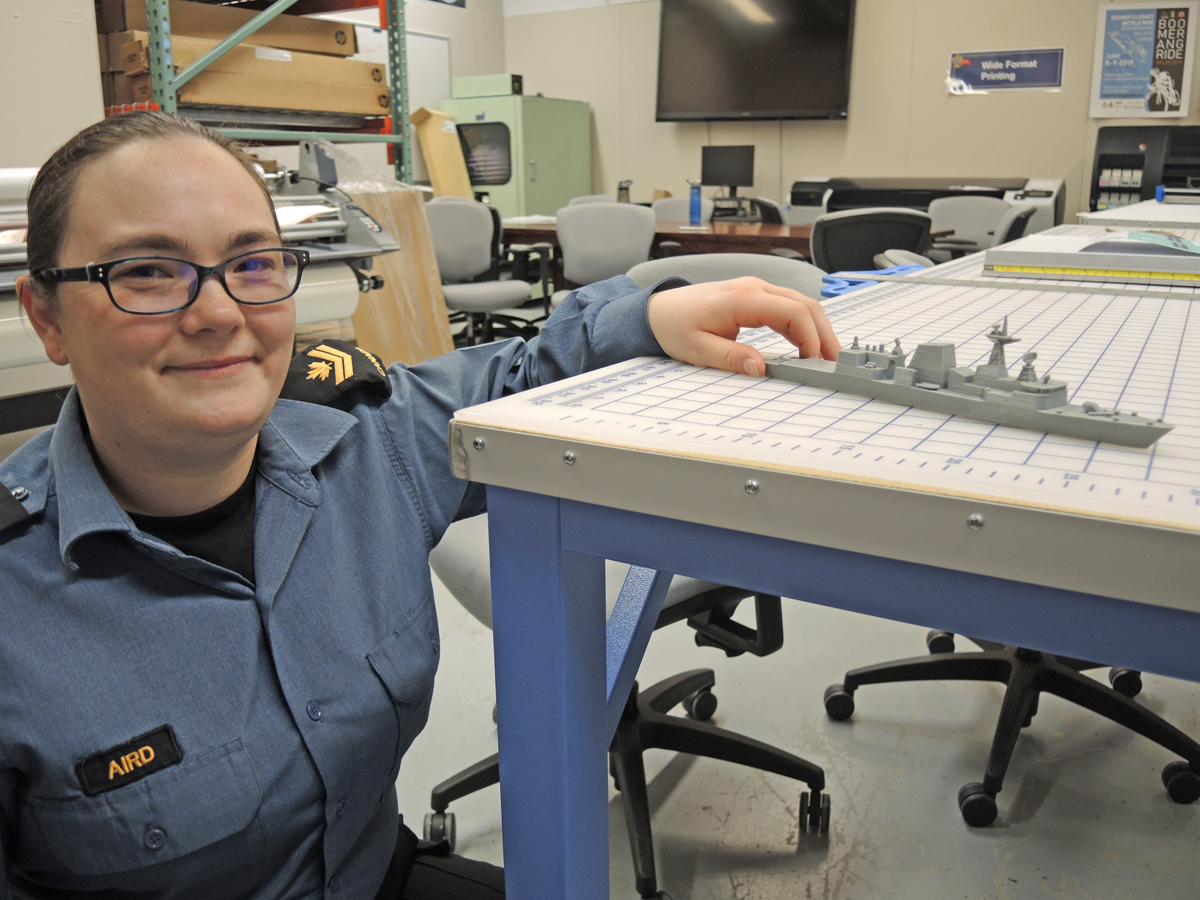New dimension in naval training
By Lookout on Mar 04, 2020 with Comments 0
Peter Mallett, Staff Writer ~
The 3D printer is fast becoming the progressive instructor’s secret weapon.
At Naval Training Development Centre (Pacific), this emerging technology has become a new resource for instructors at Naval Fleet School (Pacific) to help students learn the particulars of a frigate.
One-dimensional warship drawings from past curriculum will, over time, become lifelike three-dimensional printed figurines of frigates or ship parts.
Once printed, 3D warships are magnetized and placed on grids where naval communicator students can practice creating formations and tactical operations at sea, like the game Battleship.
Other trades, such as Marine Systems Engineers, could also use the technology to learn about equipment, ship layout, and location of departments within it.
School instructors are supported by the NTDC(P) Learning Support Centre, who develop training aids. Their higher resolution 3D printer – a Sigma R19 manufactured by BCN 3D of Spain – is housed in the Nixon Building in Work Point. Master Seaman Anne Marie Aird and Able Seaman Torrey Francis are the printing technicians.
“I think there is a great deal of potential for 3D printing in everyday naval use. It has an infinite number of uses for the navy beyond just training aids, which is what we are currently using the technology for,” says MS Aird.
3D printer technology is also used at Fleet Maintenance Facility Cape Breton for manufacturing purposes. The army also use in-house 3D technology to create models for battlefield tactics.
“I think this technology will increase a sailor’s self-confidence when they are asked to do a real-life task,” said MS Aird. “If you have seen it before and were able to play around with it, this helps you make the connection between your brain, your body, and the physical world.”
Feedback from students has been positive with many indicating they prefer to use these lifelike models as learning tools that enhance traditional learning methods such as textbooks, online resources, or verbal instruction, as they add a physical and visual representation.
“Most people seem to be genuinely excited about this technology and its capabilities because of its limitless applications,” said AB Francis.
Filed Under: Top Stories
About the Author:






